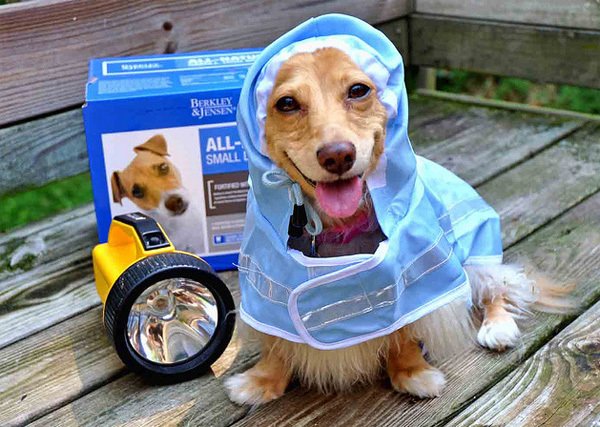Cookie lovers, rejoice: National Cookie Day is December 4th! Our patients also enjoy cookies, though theirs of course look a bit different than ours. If you like cooking, read on! A Rancho Santa Fe, CA vet lists some simple recipes you can make your canine pal (and his buddies) below.
Liver Woofs
Use a food processor to whole-wheat flour, eggs, and beef liver, then pour into a brownie pan. 30 minutes at 350 should about do it.
Pumpkin Noms
For these, you’ll combine pureed pumpkin with natural peanut butter, egg, and some whole-wheat flour. You can add some water if the batter is too thick. Cook at 350F for 30 minutes.
Muttloaf
Muttloaf isn’t technically a cookie, but we’re pretty sure Fido won’t care. Just like the meatloaf recipes you may use when cooking for people, this one is based on minced beef or turkey, mixed with eggs, bread crumbs, parmesan cheese, peas, carrots, and tomato paste. The biggest difference is that you’ll need to omit the garlic and onions. Pop it into the oven at 350 for 75 minutes.
Puppy Yums
Mix bacon bits, organic baby food, whole-wheat flour, and sodium-free broth with canned turkey or chicken. Portion it out into individual servings and cook at 375F for 15 minutes.
Turkey Yums
Combine some cooked, boneless turkey with shredded cheese, bacon bits, bacon grease, peas, and/or spinach. Pour the mixture into a cupcake mold or divide into smaller portions, and bake at 375 for 20 minutes.
Dog Nog
These are very easy to make, and are bound to get Fido’s cute tail going. Combine plain yogurt with two jars of organic baby food, using a blender or immersion blender. For extra tail wags, put a dog-biscuit on top. Celebrate your love for these treats by checking out ‘Dog Biscuit Appreciation Day‘, where you can explore fun ways to make and enjoy dog biscuits.
Turkey Woofers
Mix boneless turkey with cheese, peas, sweet potatoes, egg, and/or other safe veggies in a food processor. Divide that batter into small portions, and then cook at 375F for about 20 minutes.
Yogurt / PB Bites
To start, mix some natural peanut butter and plain yogurt. You can also add mashed banana, wheat germ oil, pureed pumpkin, and/or or crushed up kibble. if you like. Divide into small portions, and bake at 350 for 25-30 minutes.
Unsafe Foods
Always stick with safe ingredients. Never use garlic or onions, grapes or raisins, chocolate, avocado, caffeine, alcohol, meat on the bone, or xylitol. Ask your vet for more information. If you’re looking to ensure your furry friend’s treats and meals are perfectly balanced, consider our ‘Vet Nutrition & Weight Management’ services, designed to keep your pet healthy and happy with the right diet.
Our Advice on Holiday Cookies For Fido in 2024
What basic ingredients do most of these dog treat recipes share?
Most of these dog treat recipes share basic ingredients such as whole-wheat flour, eggs, and natural peanut butter, which serve as foundational components. Additionally, many recipes include healthy add-ins like pureed pumpkin, cooked meats (turkey or beef), and vegetables (peas, carrots, sweet potatoes) for nutritional value and flavor variety. These ingredients are chosen for their safety and digestibility for dogs, ensuring the treats are both enjoyable and beneficial for your canine companion’s health. Always avoid unsafe ingredients like garlic, onions, grapes, and xylitol.
Should you use organic ingredients?
Using organic ingredients in dog treat recipes is a good practice for those looking to minimize their pet’s exposure to pesticides and artificial additives commonly found in non-organic produce and products. Organic ingredients can provide a cleaner, potentially healthier option, contributing to overall wellness. While not mandatory, choosing organic can be particularly beneficial for dogs with sensitivities or allergies to certain chemicals. However, the most crucial factor is ensuring all ingredients are safe and suitable for dogs, regardless of whether they are organic or not.
If your dog doesn’t like liver, can you substitute something else in the ‘Liver Woofs’?
Yes, if your dog doesn’t like liver, you can substitute it with another protein source that your dog enjoys, such as cooked ground turkey, chicken, or beef. Ensure the meat is plain and cooked without any added seasonings, onions, or garlic, which are harmful to dogs. The key is to maintain the consistency of the recipe, so the substitute should be similar in texture to liver once processed. This adjustment allows you to tailor the treats to your dog’s taste preferences while still providing a nutritious snack.
How many of these treats are safe to give your dog per day?
The number of treats safe to give your dog per day depends on their size, weight, and dietary needs, but a general guideline is that treats should not make up more than 10% of your dog’s total daily caloric intake. For most dogs, this might translate to a few small treats per day. It’s essential to consider the calorie content of the treats and the nutritional balance of your dog’s overall diet. Always consult with your vet to determine an appropriate amount based on your specific dog’s health and nutritional requirements.
How should you store the leftover treats to keep them fresh?
To keep leftover dog treats fresh, store them in an airtight container in a cool, dry place. For treats that are moisture-rich or don’t contain preservatives, consider refrigerating them to extend freshness, where they can last for about a week. For longer storage, you can freeze the treats; most will keep well for up to 6 months when frozen. Thaw frozen treats in the refrigerator before giving them to your dog to ensure they’re easy to chew and digest.
Happy Holidays from Santaluz Animal Care, your Rancho Santa Fe, CA vet clinic. Call us anytime!





